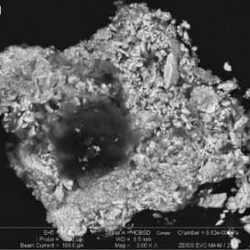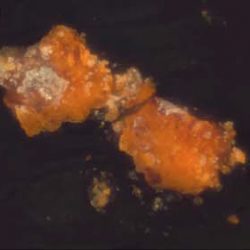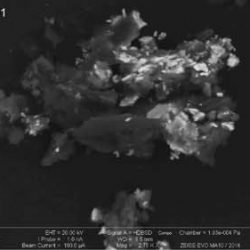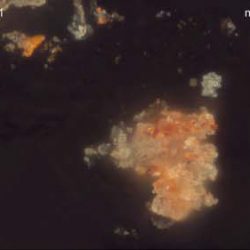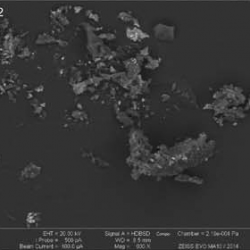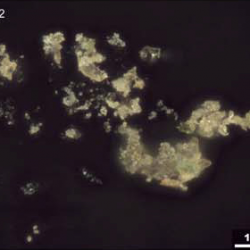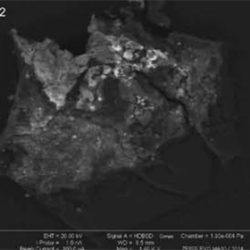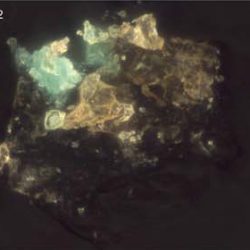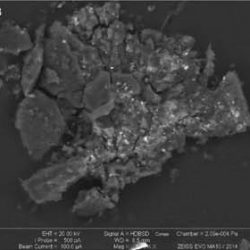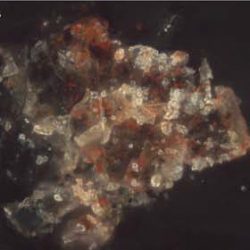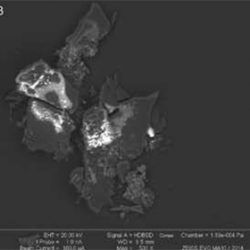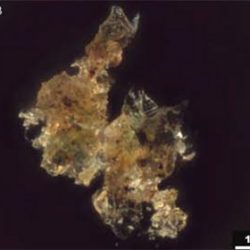Surfaces and pigments
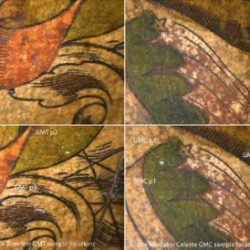
Before (above) and after (below) the colour samples were taken from the terrestrial globe (left) and celestial globe (right), Ill. HKB|HEAB report.
- 785nm Raman spectroscopy for the pigments,
- FTIR (Infrared) spectroscopy for the binders,
- scanning electron microscopy (SEM) with energy-dispersive spectroscopy (SEM-EDS).
Microsamples were collected at UNIL’s Forensic Science Institute by Dr Nadim Scherrer of HKB|HEAB and Dr Stefan Zumbühl. They drew red, green and brown-black pigments from the terrestrial globe and red, green and yellow/green pigments from the celestial globe.
The report concluded that all the components identified by the analyses were available at the time the globes were manufactured (around 1540). The heterogeneity and mild chemical degeneration of the green pigments suggested either deterioration or the use of a mineral product.
- GT p1
- GT p1
Celestial globe – dark red : litharge, lead red
- GC p1
- GC p1
- GT p2
- GT p2
Celestial globe – green : copper oxalate dihydrate
- GC p2
- GC p2
- GT p3
- GT p3
Celestial globe – brown-black printing ink : iron oxide, green copper pigments, gypsum
- GC p3
- GC p3
Celestial globe – green colour : oil, possible but unconfirmed presence of proteins (the spectra overlap)
Find out more
- Analytical report : Kunsttechnologisches Labor, Graduate School of the Arts in Bern (HKB|HEAB), Ref. No. HKB1406101Ext, 20.09.2014, Dr Nadim Scherrer & Dr Stefan Zumbühl, Bern.
